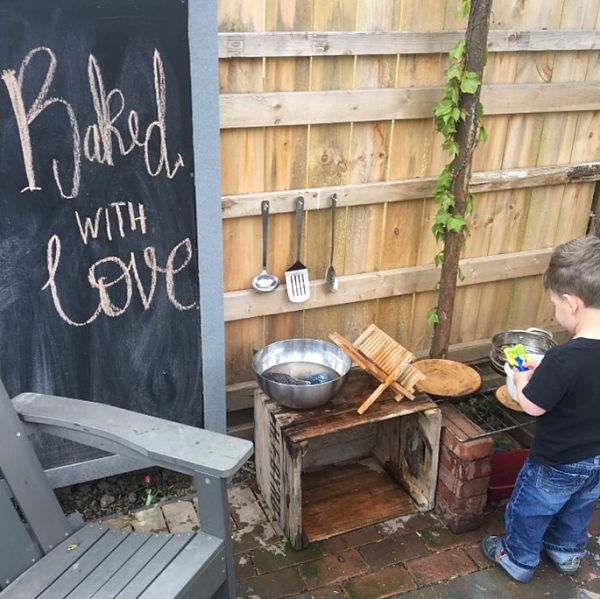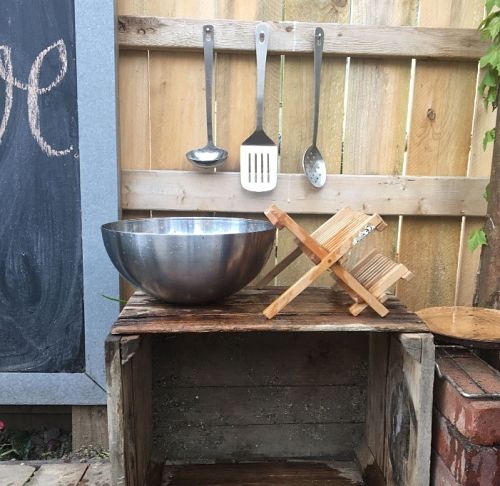Getting Our Students Outside Every Day, Part 3
 If you missed Part 1 and Part 2, you may want to read them before reading this post. Part 1 looked at the differences between the way American parents and educators seem to view outdoor play for children in contrast to the way it is viewed within harsher climates such as the Scandinavian countries. Part 2 looks at the way outdoor play affects a child’s development and health. And now, I would like to continue using McGurk’s research in There’s No Such Thing as Bad Weather as a springboard for this post which will look at how we as Christians should be viewing the earth. I also want to give you several practical ideas on how to get your students into the great outdoors more than you were yesterday.
If you missed Part 1 and Part 2, you may want to read them before reading this post. Part 1 looked at the differences between the way American parents and educators seem to view outdoor play for children in contrast to the way it is viewed within harsher climates such as the Scandinavian countries. Part 2 looks at the way outdoor play affects a child’s development and health. And now, I would like to continue using McGurk’s research in There’s No Such Thing as Bad Weather as a springboard for this post which will look at how we as Christians should be viewing the earth. I also want to give you several practical ideas on how to get your students into the great outdoors more than you were yesterday.
Interaction with Nature Helps Develop Students Who Care About Nature
While many people in a developed and industrialized country often believe that nature and its resources are mainly there for humans to master and extract from, we should be counteracting this mentality as Christians. Rather, because we believe that God has entrusted us to be His stewards, we have a responsibility to care for His creation. By creating positive experiences within nature for our children, we can influence the next generation to continue caring for His creation.
Within our American natural parks, it is common to see “Leave No Trace” signs which encourage you to both leave no footprint on the environment and not to take anything from the environments such as a shell, driftwood, or pine cone. However, Thomas Thomas Beery, an assistant professor in environmental science at Kristianstad University, Switzerland, found that collecting natural objects can foster play and creativity as well as knowledge of the outdoors. In another study, he showed that college students who had collected items like rocks, shells, insects or foraged foods when they were younger, thought of themselves as more connected to nature than the students who did not collect (p.143). Another study went on to research the natural environments themselves and it was found that environments where there had been some wear and tear actually had better growth and foliage than environments where there had been no trace of human contact and interaction. Using this research, we can draw the conclusion that is both beneficial to humans and to nature to interact with God’s creation.
Practical Ideas to Increase Outdoor Activity for the Children Under Your Care
Let’s get practical. What are some ways that we can get our students out to the greatest classroom on earth, the earth itself? Nature makes subjects like math and physics come alive in a way that simply are not possible inside the classroom such as comparing stick lengths, using the sledding hill to learn about friction (sliding with a wax cloth, plastic shed, or on shoes with grooves), or building canals after a large rainstorm (p. 80).
Every classroom has treats and celebrations that students work towards. Can you take those celebrations and treats outdoors? During the winter, use a sledding hill as a reward system and build an open fire to warm up around with hot dogs to grill. An ice-skating party at a local pond is sure to be a good motivator as well. During the fall, have a leaf raking party and jump in those leaves together. During the spring, allow your students to read outside as much as possible. And throughout the entire year, go on nature hikes to record and observe the changes within the seasons. “Nature looks and acts differently depending on the season and the weather, and in order to understand the changes, you need to experience them firsthand” (p. 192).
 Finally, provide time for unstructured play and child-led activities. According to McGurk, “Another advantage of having fewer structured and more child-led activities is that it can improve children’s executive functioning. Essentially, this makes them better able to delay gratification, show self-control, and reach their own life goals” (p.123). If possible, reserve a spot in your school yard where children are allowed to dig in the dirt and create a simple mud kitchen with old pots, pans, cups and other kitchen utensils. As a teacher commented to McGurk, “The outdoors is a free space where children can take risks—it’s how children learn, a form of trial and error. Sometimes it is better for the adult to step back, observe, and not intervene.”
Finally, provide time for unstructured play and child-led activities. According to McGurk, “Another advantage of having fewer structured and more child-led activities is that it can improve children’s executive functioning. Essentially, this makes them better able to delay gratification, show self-control, and reach their own life goals” (p.123). If possible, reserve a spot in your school yard where children are allowed to dig in the dirt and create a simple mud kitchen with old pots, pans, cups and other kitchen utensils. As a teacher commented to McGurk, “The outdoors is a free space where children can take risks—it’s how children learn, a form of trial and error. Sometimes it is better for the adult to step back, observe, and not intervene.”
A Call to Reflect and Evaluate
Americans were not always so concerned about the “dangers” of the outdoors. If your parents are anything like mine, they can tell you how they had to walk to school for two miles up hill in every type of weather. Coming back home during the winter, they would sit on their lunch pails and slip and slide down the macadam. According to studies done by McGurk, 70% of American mothers played freely outside while they were young, but now only 29% of their children do so. Instead, the majority of children are spending significant amounts of time getting transported to organized activities and sports instead of having unstructured outdoor play (p.215).
Within our Anabaptist schools, are we slowly following the trends of the world around us and keeping our children inside more than they were a hundred years ago? And if so, is it the trend we want to continue? If not, let’s find ways to encourage each other to get our children into the great outdoors more than we did yesterday.
Sources:MCGURK, L. K. (2018). THERE’S NO SUCH THING AS BAD WEATHER: A Scandinavian mom’s secrets for raising healthy, … resilient, and confident kids. SIMON & SCHUSTER.
Related Items
Leave a Reply
Feedback